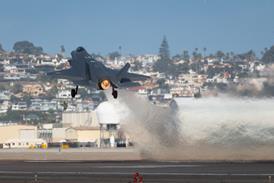The US Air Force is attributing the 1 April 2011 crash of a Fairchild Republic A-10C in Germany to spatial disorientation, an accident report released on 7 March says.
"The accident investigation board president found clear and convincing evidence that the cause of the mishap was human factor error," the report reads. "Specifically, the [mishap pilot] suffered from [spatial disorientation] in the weather and entered an unusual and ultimately unrecoverable attitude."
The pilot, who was assigned to the USAF's 52nd Fighter Wing at Spangdahlem air base, Germany, ejected only 600ft (272m) off the ground and was badly hurt in the process. The loss of the aircraft cost the air force $16 million.
Spatial disorientation is a condition in which a pilot's perception of how he or she is oriented does not match the actual attitude and position of the aircraft. It usually manifests when flying in poor weather conditions with low visibility - as was the case with the 2011 mishap.
The pilot was flying in close formation during an instrument approach in bad weather.
Source: Flight International























